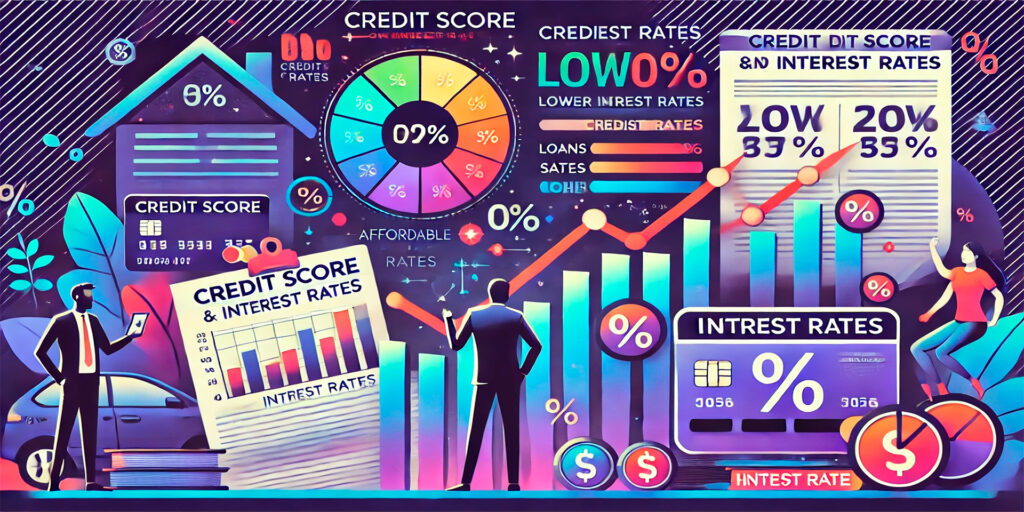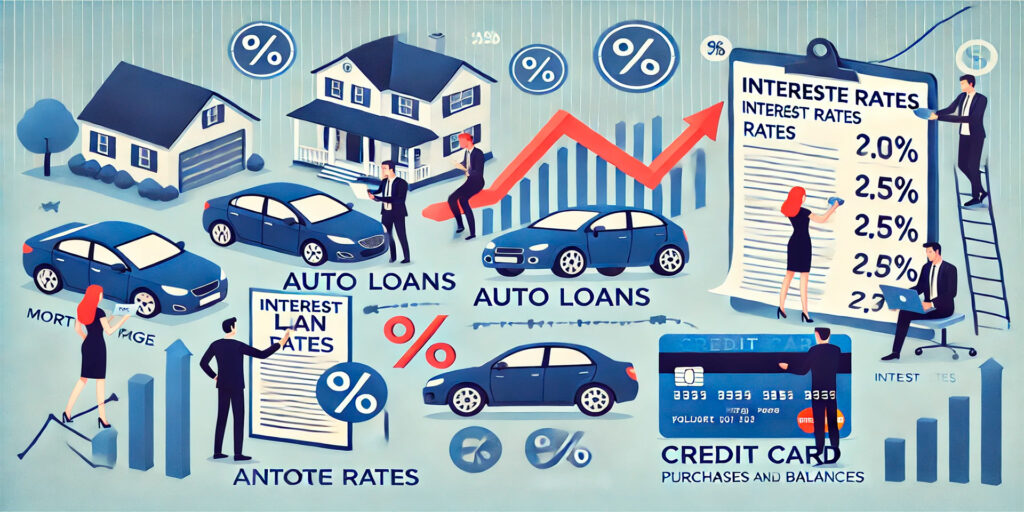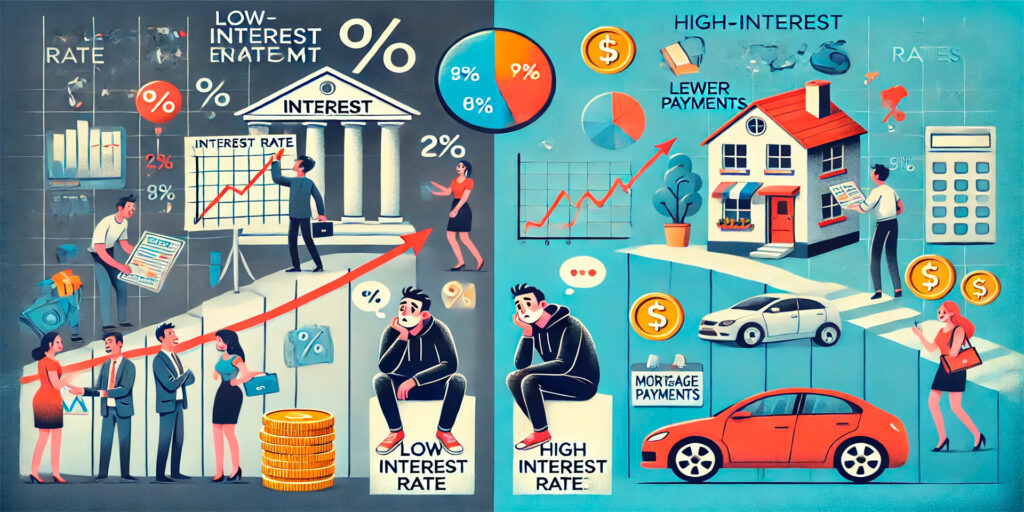Interest rates are a fundamental force shaping your financial future. Whether you’re borrowing money for a home, saving for retirement, or managing debt, interest rates dictate the cost of these financial activities and influence your overall financial health. Understanding how interest rates impact your personal finances is essential for making informed decisions that ensure long-term financial stability.
Interest rates reflect the price of borrowing money. When interest rates are low, borrowing becomes cheaper, making it easier to finance major purchases like a home or a car. Conversely, when interest rates rise, the cost of borrowing increases, which can strain your budget and limit your financial flexibility. On the flip side, interest rates also determine how much you earn on savings or investments. Higher interest rates yield better returns, while lower rates can diminish the growth of your savings over time. Effectively managing interest rates is key to securing a stable financial future, whether you’re taking on new debt or building wealth.
Understanding the Impact of Interest Rates on Borrowing
When you take out a loan, whether for a home, car, or personal needs, the interest rate directly affects how much you’ll pay in total. A loan with a lower interest rate results in lower monthly payments and less overall interest paid during the life of the loan. For example, even a small reduction in the interest rate on a mortgage can save you thousands of dollars over a 30-year term. This makes locking in favorable rates essential when borrowing for large, long-term financial commitments.
On the other hand, high interest rates make borrowing more expensive. Loans with higher rates mean more of your monthly payment goes toward interest rather than paying down the principal. This not only increases the cost of the loan but also limits your ability to borrow more in the future. For individuals with higher interest loans, such as credit card debt, high rates can quickly lead to unmanageable financial obligations, making it difficult to reduce debt and improve financial health.
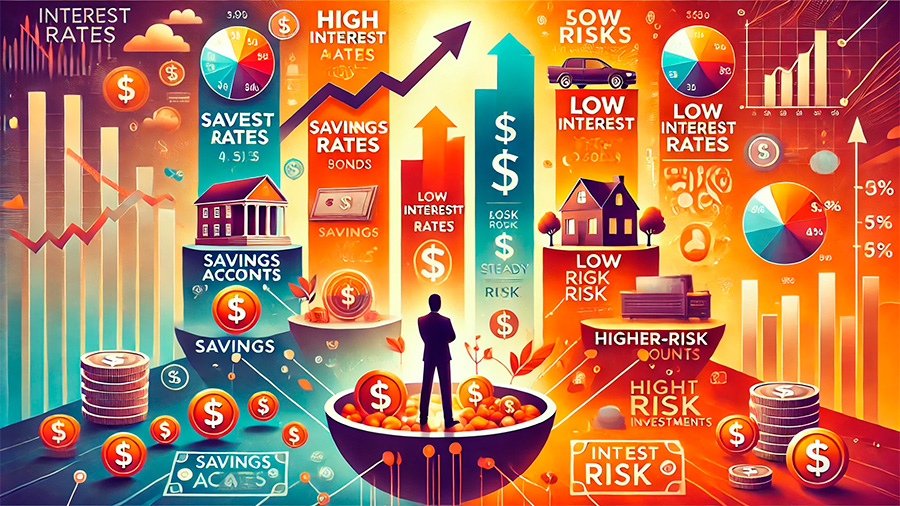
How Interest Rates Affect Savings and Investments
Interest rates also play a major role in how your savings and investments grow over time. When rates are high, your savings in accounts like high-yield savings accounts or certificates of deposit (CDs) accumulate more interest, allowing your money to grow faster. Similarly, bonds and other fixed-income investments offer higher returns when interest rates are elevated, making them attractive options for generating steady income.
Conversely, when interest rates are low, these savings vehicles may offer minimal returns, which can hinder your ability to grow your wealth. In low-rate environments, individuals often seek out higher-risk investments, such as stocks or real estate, in pursuit of better returns. While these alternatives offer the potential for higher growth, they also come with greater risk, requiring careful consideration of your financial goals and risk tolerance.
Managing your savings strategy according to the prevailing interest rates can help ensure that your money continues to work for you, whether the goal is short-term savings or long-term wealth accumulation. Keeping an eye on interest rate trends and adjusting your savings plan accordingly can maximize your returns and keep your financial future on track.
Fixed vs. Variable Interest Rates
One of the most important considerations when managing loans or investments is whether to choose fixed or variable interest rates. Fixed rates provide stability by locking in an interest rate that remains constant throughout the life of the loan or investment. This can be especially beneficial in a rising-rate environment, as it protects you from future rate hikes and keeps your payments or returns predictable.
Variable interest rates, on the other hand, fluctuate with market conditions. While they may offer lower initial rates, they come with the risk of increasing over time. If you have a variable-rate loan, rising rates could lead to higher payments, which may strain your budget. On the flip side, if you’re earning interest on a variable-rate investment, a rising rate environment could mean higher returns.
Understanding the trade-offs between fixed and variable rates is essential for making the right decision based on your financial situation. If you prefer stability and predictability, a fixed rate may be the better option. However, if you’re willing to accept some risk in exchange for potentially lower rates or higher returns, a variable rate might be more suitable.
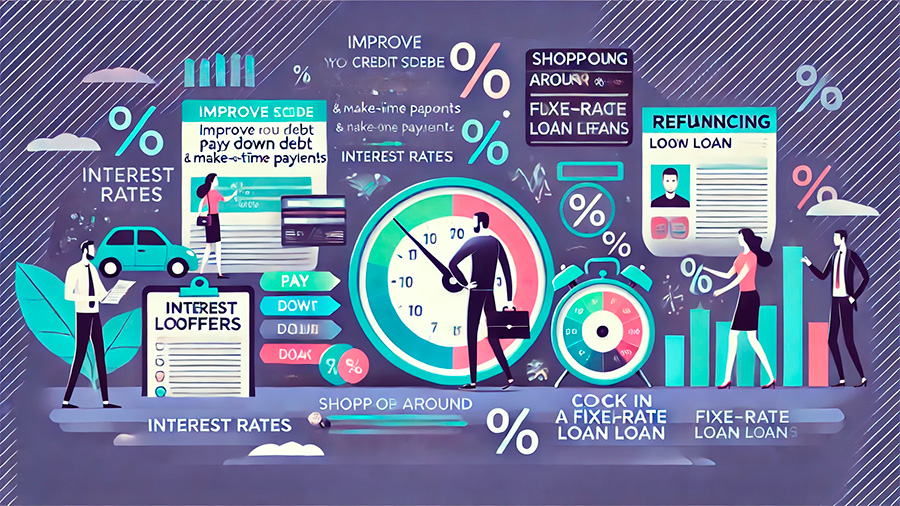
Managing Interest Rates for Long-Term Financial Stability
Successfully managing interest rates requires proactive financial planning. For borrowers, improving your credit score is one of the most effective ways to secure lower interest rates. Lenders use your credit score to assess how risky it is to lend to you, and a higher score signals that you’re a reliable borrower. This can lead to better loan terms and lower rates, which can save you money in the long run. Regularly checking your credit report, paying down debt, and making on-time payments are all strategies that can improve your credit score and help you access more favorable rates.
Another key strategy is to shop around for the best interest rates. Whether you’re looking for a mortgage, personal loan, or credit card, different lenders may offer varying terms, and taking the time to compare offers can help you find the most cost-effective option. Even small differences in interest rates can have a significant impact on your financial outcomes, so it’s worth putting in the effort to secure the best deal.
In times of low interest rates, locking in fixed-rate loans or refinancing existing loans can help you capitalize on favorable borrowing conditions. Refinancing can be particularly beneficial for long-term loans like mortgages, where even a small rate reduction can lead to substantial savings over time.
Preparing for Interest Rate Changes
Interest rates are constantly influenced by broader economic factors, and staying informed about these trends can help you anticipate changes and adjust your financial strategy accordingly. For example, when rates are expected to rise, locking in a fixed-rate mortgage or other loan can protect you from future increases. On the other hand, if rates are expected to fall, you may want to delay taking on new debt until more favorable rates are available.
For savers, rising interest rates provide an opportunity to maximize returns on low-risk investments like savings accounts and bonds. However, during periods of low interest rates, it may be necessary to seek out alternative investments or adjust your financial plan to ensure that your money continues to grow at a pace that meets your goals.
Conclusion
Interest rates have a profound impact on every aspect of your financial life, from the cost of borrowing to the returns on your savings. By understanding how interest rates work and how they influence your financial decisions, you can better manage your loans, optimize your savings, and plan for a secure financial future. Whether you’re navigating variable-rate loans or seeking to lock in favorable terms, making informed decisions about interest rates is key to achieving long-term financial stability.


